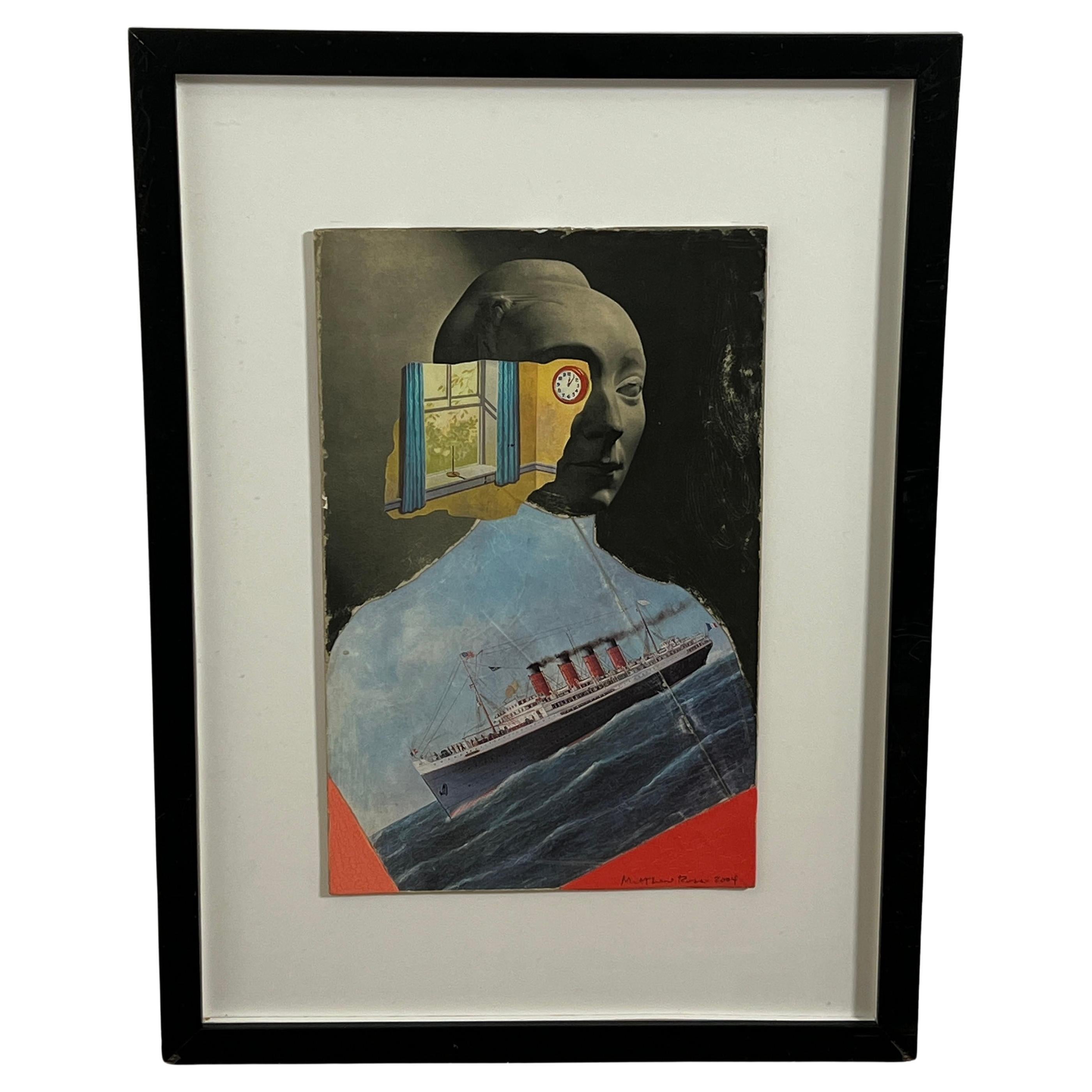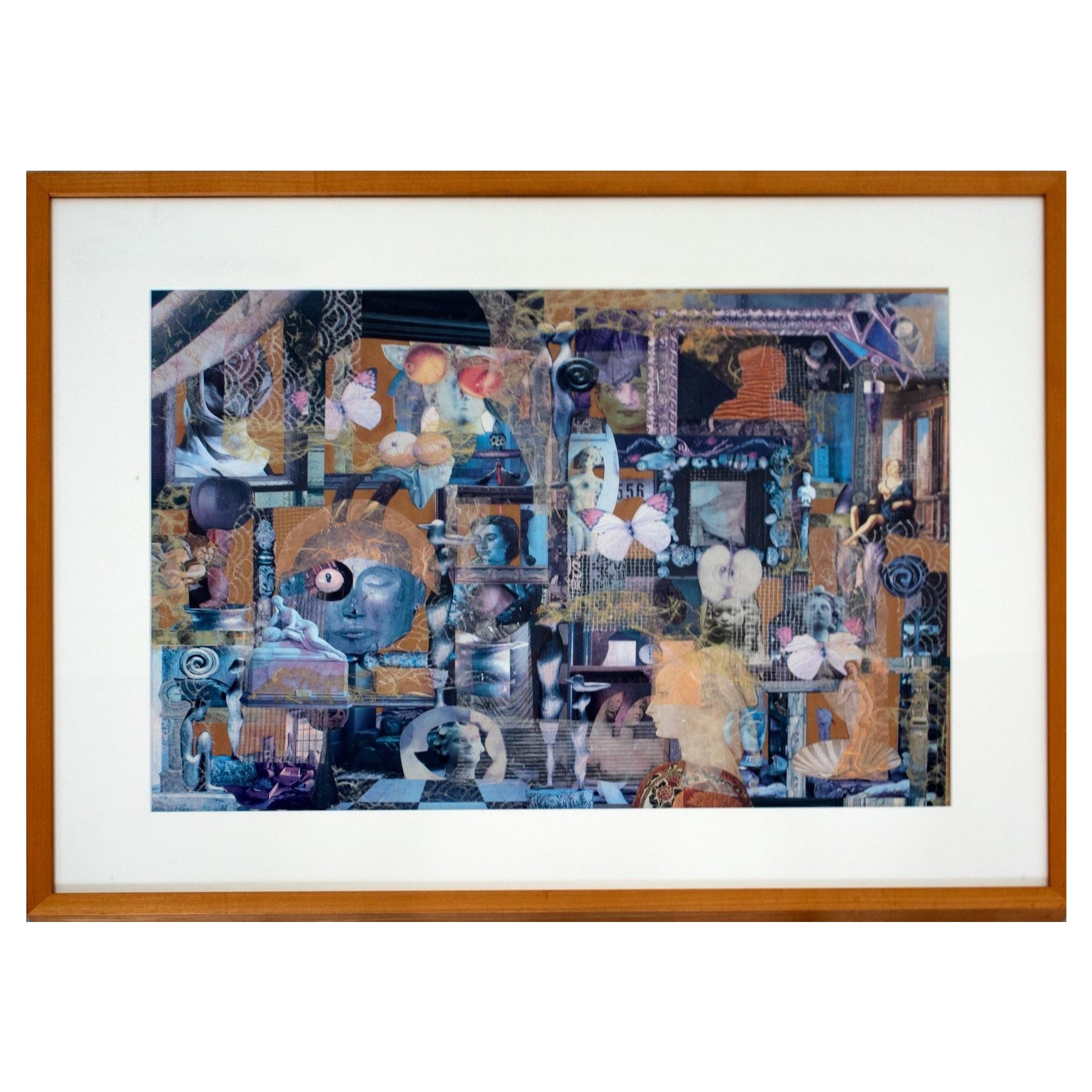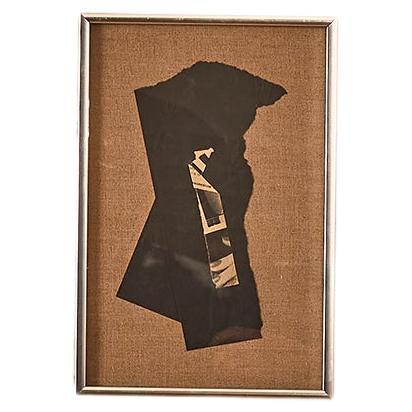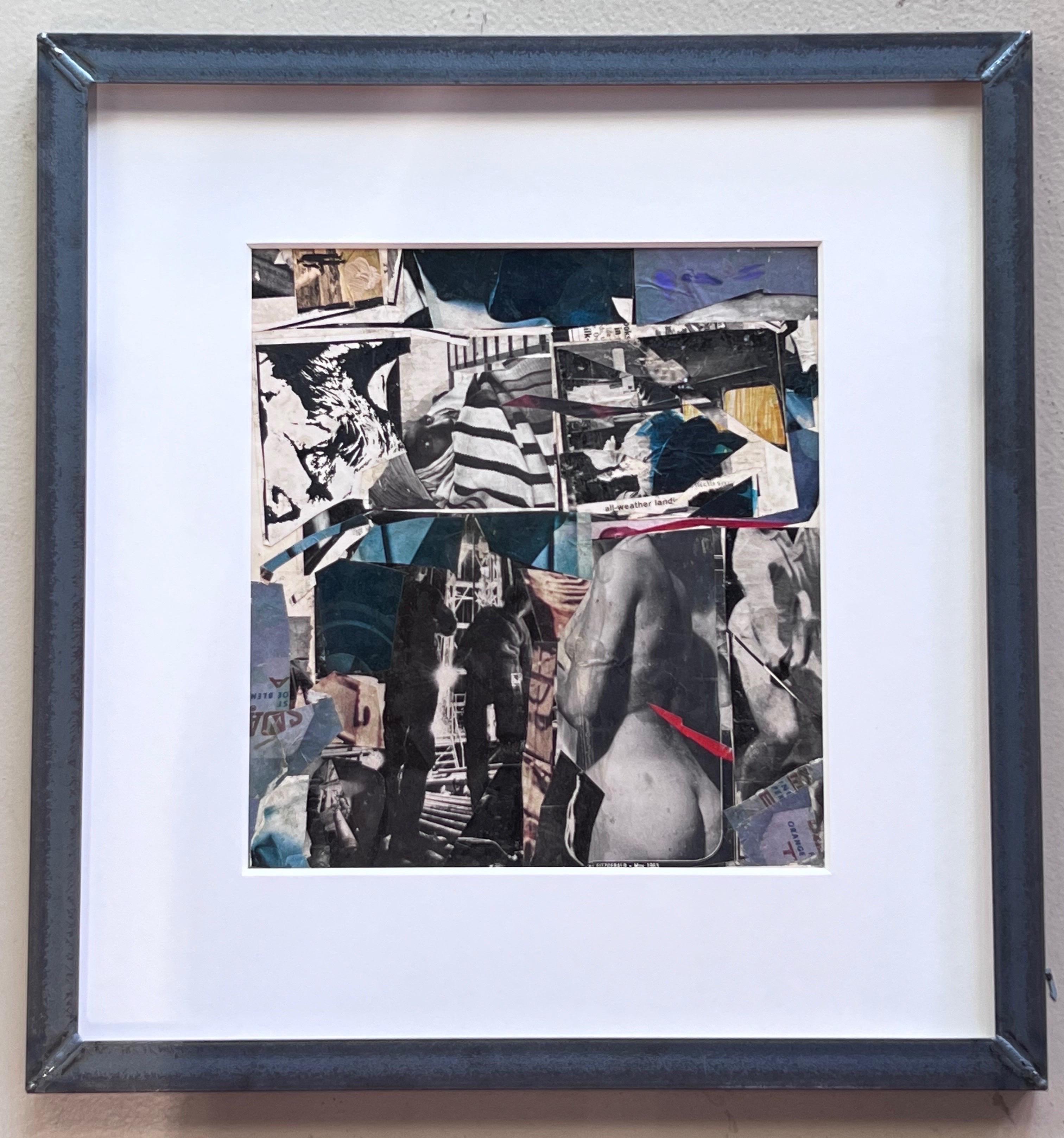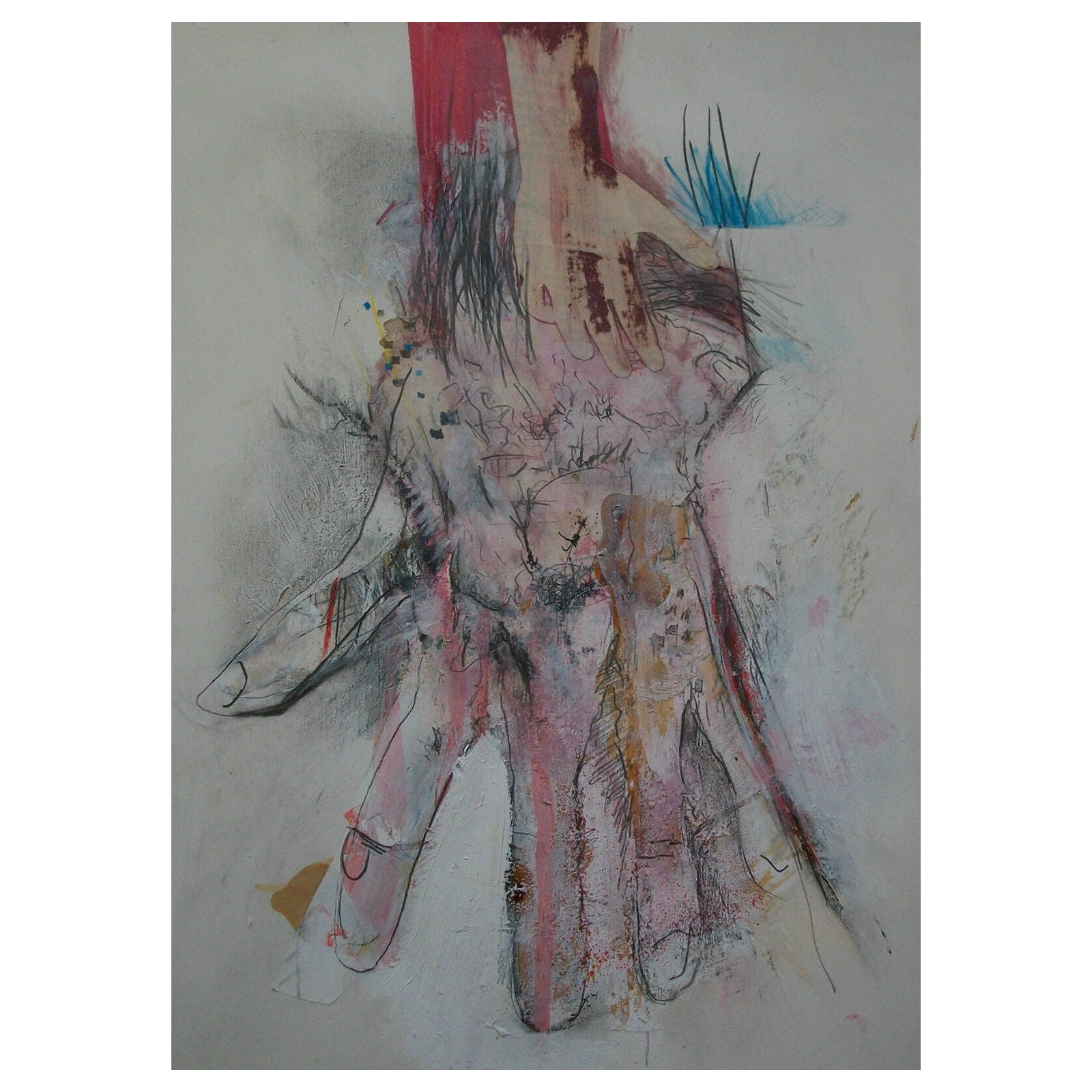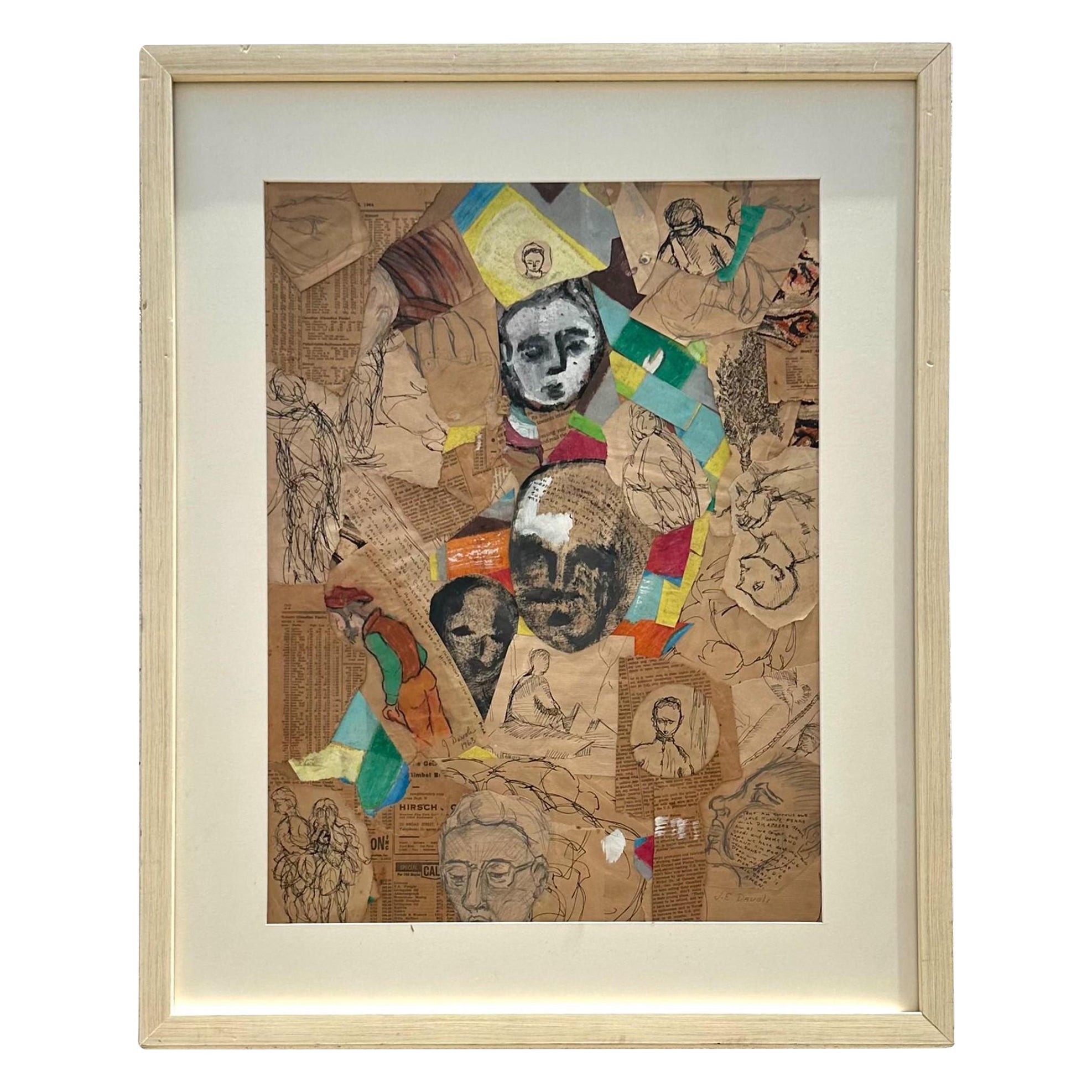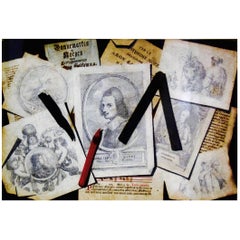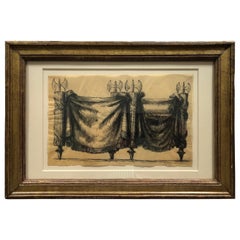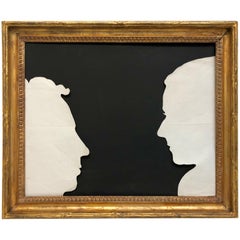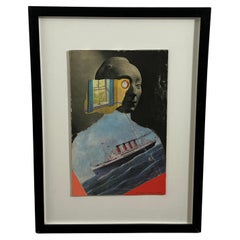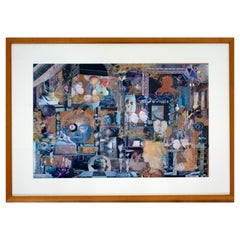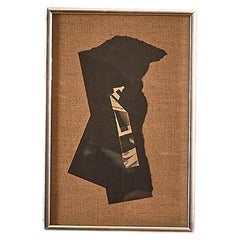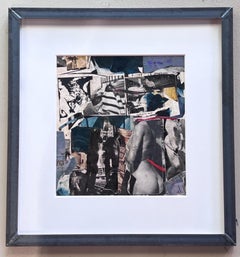Items Similar to Eugene Berman Collage in Original Frame
Want more images or videos?
Request additional images or videos from the seller
1 of 5
Eugene Berman Collage in Original Frame
$9,000
£6,870.24
€7,897.80
CA$12,664.61
A$14,083.57
CHF 7,397
MX$172,185.78
NOK 92,173.66
SEK 86,894.87
DKK 58,943.13
About the Item
This haunting image by Eugene Berman was painted on a sheet of paper cut in the shape of a heart, mounted to a paint-speckled ground, encircled with metal shavings, and placed in a frame of the artist’s own devising. Berman wrote the title, Radiograph of a Heart, on the back. It refers to the medical X-rays that doctors had recently come to rely on. Yet Berman’s point seems to be that while a heart can be monitored scientifically, the emotions associated with it lie beyond the power of medical science.
Russian by birth, Berman fled St. Petersburg during the Revolution and settled in Paris. Later, as a Jew, he fled the Nazi advance and took refuge in New York and Hollywood. His peace of mind, however, was shattered by the suicide of his wife, actress Una Munson (who played Belle Watling in Gone With the Wind). That distressing event — “Don’t follow me” she admonished in her suicide note — cast him adrift once again. Finally, he came to rest in Rome where he would pass the years that remained to him.
Along with his brother Leonid Berman, Pavel Tchelitchew, and Christian Bérard, Eugene Berman was a Neo-Romantic painter. The works by that school were avidly acquired in the 1930s and 1940s by, among others, Alfred Barr, founding director of the Museum of Modern Art. Since then they have fallen out of favor. Should fashion reverse itself yet again, perhaps these paintings will emerge from storage and resume their places on hollowed walls.
- Creator:Eugene Berman (Artist)
- Dimensions:Height: 26.5 in (67.31 cm)Width: 21.5 in (54.61 cm)Depth: 3 in (7.62 cm)
- Style:Modern (Of the Period)
- Place of Origin:
- Period:
- Date of Manufacture:1945
- Condition:Wear consistent with age and use.
- Seller Location:New York, NY
- Reference Number:1stDibs: LU1061413064192
About the Seller
5.0
Recognized Seller
These prestigious sellers are industry leaders and represent the highest echelon for item quality and design.
Established in 1994
1stDibs seller since 2014
20 sales on 1stDibs
- ShippingRetrieving quote...Shipping from: New York, NY
- Return Policy
Authenticity Guarantee
In the unlikely event there’s an issue with an item’s authenticity, contact us within 1 year for a full refund. DetailsMoney-Back Guarantee
If your item is not as described, is damaged in transit, or does not arrive, contact us within 7 days for a full refund. Details24-Hour Cancellation
You have a 24-hour grace period in which to reconsider your purchase, with no questions asked.Vetted Professional Sellers
Our world-class sellers must adhere to strict standards for service and quality, maintaining the integrity of our listings.Price-Match Guarantee
If you find that a seller listed the same item for a lower price elsewhere, we’ll match it.Trusted Global Delivery
Our best-in-class carrier network provides specialized shipping options worldwide, including custom delivery.More From This Seller
View AllSmall Painting by Jean Hugo from 1927
By Jean Hugo
Located in New York, NY
Great grandson of the famous writer Victor Hugo, the painter Jean Hugo (1894-1984) was in the thick of the Paris art scene between the wars. A member of the avant garde, he was a friend of Picasso, Cocteau and Colette and was associated with the Neo Romantics. His small gouaches on paper were avidly collected by Dr. Albert Barnes, and can be seen today in the Barnes Collection in Philadelphia. Hugo's most desirable work -- landscapes, interior scenes, set designs -- date from the mid 1920s to the late 1930s. This whimsical painting, signed and dated 1927, is set in a curtained, classical interior furnished with Victorian lighting fixtures...
Category
Vintage 1920s French Romantic Paintings
Materials
Gouache
French Trompe L'oeil Drawing Circa 1800
Located in New York, NY
This trompe l'oeil drawing depicts the artist's tools -- a black and a red crayon, and a folding steel ruler that was painted with silver pigments, which have blackened with age. They're shown on a sheaf of papers that include a medieval manuscript page, a musical score, and a group of prints.
The unifying theme is the artistic patronage of the Medici, the Grand Dukes of Tuscany, who intermarried with the Habsburgs, who were the Holy Roman Emperors.
Among the papers are prints by Stefano Della Bella, the Florentine artist who worked for the Medici. They depict a negro page with a horse, and portraits of Lorenzo Lippi...
Category
Antique Early 1800s French Empire Drawings
Materials
Paint, Paper
Emilio Terry 1930s "Louis XVII Style" Bed
By Emilio Terry
Located in New York, NY
Emilio Terry -- architect, interior, and furniture designer -- was the inventor and sole-practitioner of what was drolly referred to as his “Louis XVII style...
Category
Vintage 1930s French Neoclassical Revival Drawings
Materials
Paper
American Federal Silhouettes of Livingston Family Members
Located in New York, NY
Snipping a profile from paper with scissors, and mounting the result to a contrasting sheet of paper, became a popular diversion among the European and American upper classes in the ...
Category
Antique 1830s American Federal Decorative Art
Materials
Paper
1934 Remie Lohse Photograph for Vogue
By Remie Lohse
Located in New York, NY
Remie Lohse was born in Puerto Rico, studied painting in Denmark, and settled in New York in 1928, where he became a professional photographer. In the 1930s he was a freelancer who specialized in advertising and magazine features, and shot covers for Vogue. If he often focused on the high life, seen in this couple stepping out on the town, he also shot humble subjects. He was more interested in his art than a particular milieu, and many of his photographs are little masterpieces. His contemporary Gilbert Seldes, the noted Vanity Fair media critic and “public intellectual” (not to mention father of actress Marian Seldes), featured Lohse in his 1934 book 'This is New York, The First Modern Photographic Book of New York.' In 1939 Lohse came out with his own book titled 'The Miniature Camera in Professional Hands.'
Our photograph was one of three shot by Lohse for a 1934 Vogue article titled “High Spots and Low Music." If the photograph (image size 4 1/4" x 6") show a couple making the nocturnal rounds of Manhattan restaurants, bars, and jazz clubs, the story itself also covers the daytime meeting places of the ladies who lunch. The twist is that Lohse’s model was the author herself, Elena Mumm Thornton, and her husband James Worth...
Category
Vintage 1930s American Art Deco Photography
Materials
Paper
16th Century School of Fontainebleau Engraving
By Master F.G.
Located in New York, NY
This 16th century French engraving illustrates an episode in the Trojan War – although the actual one illustrated is in question. According to recent scholarship, it depicts the corp...
Category
Antique 16th Century French Renaissance Prints
Materials
Paper
You May Also Like
Collage and Paint by Matthew Rose, Titled 12.05
Located in Peabody, MA
An original painting with collage titled "12.05", dated 2004, by the accomplished international artist Matthew Rose, an American expat artist, writer and ...
Category
Early 2000s French Modern Paintings
Materials
Paint, Paper
Contemporary Collage Signed Day 1995 Framed
Located in Keego Harbor, MI
For your consideration is a complex contemporary collage dated 1995 and signed by Day (24.5 H x 30.25 W framed). In excellent condition.
Category
1990s Paintings
Materials
Paper
Mixed Media Collage by Chet Lamore, circa 1978
Located in Long Island City, NY
Untitled mixed media collage by Chet Lamore, circa 1978. Signed Lamore on the lower center.
Category
20th Century American Contemporary Art
Materials
Marble, Metal
Original Vintage Collage by Wayne Timm #5
By Wayne Timm
Located in West Palm Beach, FL
Paper and Adhesive collage by Wayne Timm. Image and mat opening measures 11 3/4 x 12 3/4 in.
In the 1960's, Wayne Timm rubbed elbows with the likes of Warhol, Lichtenstein, Rauchen...
Category
1960s Abstract Mixed Media
Materials
Paper, Adhesive, Magazine Paper
Contemporary Mixed Media Collage on Paper, Initialed, Unframed, 21st Century
Located in Chatham, ON
Contemporary Canadian mixed media collage painting on paper - untitled - initialed and dated on the back board - acid free matte - Canada - 2013.
Excellent condition - no loss - no damage - no restoration - minor scuffs to the matte board - unframed.
Size of Painting...
Category
21st Century and Contemporary Canadian Modern Contemporary Art
Materials
Paint, Paper
$175 Sale Price
30% Off
Vintage Boho Abstract Mixed Media Sketches on Paper
Located in West Palm Beach, FL
A fabulous vintage mixed media collage on paper. A collection of the artist sketches assembled into a collage and then painted over. Acquired from a Mi...
Category
Late 20th Century North American Paintings
Materials
Glass, Wood, Paint, Paper
More Ways To Browse
Russian Revolution
Berard Christian
Christian Berard Painting
Leonid Berman
Single Line Drawing
Swatch Wall
Mendel Furniture
Vintage Figure Sketch
Antique Calligraphy Pens
Yves Saint Laurent Drawing
Male Gay Art
Gay Male Nude
Fashion Sketch Karl Lagerfeld
Robson And Sons
African Male Nudes
Leslie Charlotte Benenson
Fashion Sketches
Betty Woodward
